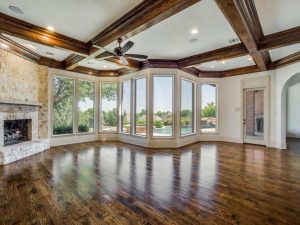In the world of commercial interior design, the fusion of functionality and style is not just a lofty goal but a fundamental principle that underpins every successful project. Commercial spaces, whether offices, restaurants, or retail stores, need to serve their intended purpose efficiently while also making a lasting visual impression. Achieving this delicate balance is the essence of a commercial interior designer’s approach.
Understanding the Functionality:
Functionality is the backbone of any commercial interior design project. Before embarking on the creative journey, a designer must thoroughly understand the specific needs and objectives of the space. This involves collaborating closely with the client, studying the workflow, and assessing the practical requirements. For instance, in an office setting, an effective designer would consider factors such as optimal space utilization, ergonomic furniture, and efficient lighting to enhance productivity. Similarly, a restaurant interior designer would focus on creating a layout that facilitates smooth customer flow, easy access to the kitchen, and comfortable dining experiences.

Balancing Aesthetics and Purpose:
Once the functional aspects are well-defined, the challenge is to infuse aesthetics into the design without compromising the space’s intended purpose. A successful commercial interior designer strives to create an environment that not only serves its practical function but also resonates with the brand’s identity and the desired ambiance. This can be seen in the choice of color schemes, materials, and decor elements. For example, a tech startup’s office may opt for a modern, minimalist design with a playful touch to inspire creativity and collaboration among employees. Conversely, a high-end boutique may embrace opulent materials and intricate detailing to convey a sense of luxury and exclusivity.
The Role of Ergonomics and Comfort:
The fusion of functionality and style also extends to the realm of ergonomics and comfort. In a commercial space, whether it is a workspace or a retail environment, the comfort of the occupants is paramount. This involves selecting ergonomic furniture, ensuring proper lighting, and creating spaces that promote well-being. In office interiors, ergonomic chairs and adjustable desks are essential to support the physical well-being of employees, enhancing productivity and reducing health-related issues. In the hospitality industry, such as hotels and restaurants, the comfort of guests is paramount, and every design decision, from seating arrangements to lighting, contributes to their overall experience and visit this website https://bilalrehmanstudio.com/pages/houston-commercial.
Sustainability and Longevity:
A truly effective commercial interior designer does not just focus on the present but also looks to the future. Sustainability is a key consideration in today’s design landscape. Incorporating eco-friendly materials and energy-efficient systems not only aligns with global environmental goals but also enhances the long-term viability of the space. Sustainable design can also be a style statement. Many modern commercial spaces are opting for a more natural and organic look, integrating elements like reclaimed wood, recycled materials, and energy-efficient lighting to create visually stunning and eco-conscious environments.
A well-executed commercial interior design project can have a profound impact on businesses and brands, enhancing employee productivity, customer experiences, and overall success. Therefore, it is crucial for designers to approach each project with a keen eye for both functionality and style, resulting in spaces that seamlessly marry form and function.